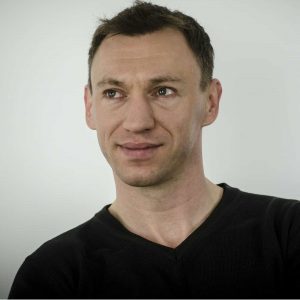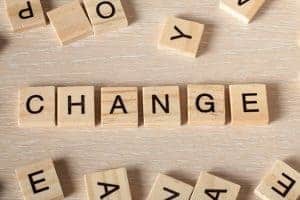 1) How would you define your personal practice?
1) How would you define your personal practice?
My personal practice changes all the time, based on desired outcomes. Some variables I keep the same for a certain amount of time, based on my personal assessment of my weaknesses. On its own, practice can become tedious, but with a certain sprinkle of exploration, it can become a new experience every time, as no two movements are the same. It is developing day-by-day, and
sometimes even backwards – which I do not consider a bad thing. The common denominator for me lies in learning about something: Learning about myself, my strength, mobility, coordination, selfregulation, fear and pain, etc.
At the moment, my weekly practice contains lots of Feldenkrais lectures, powerlifting, bouldering, experimental dancing, primal movement, mobility bouts, and movement meditation. It bears mentioning that I am not doing all these things every day but spread throughout the week. Most days of the week include Feldenkrais lectures.
2) What turning points have you encountered on your movement journey?
The biggest turning point was my first one-to-one experience with Feldenkrais. It was a Functional Integration appointment regarding my lower back pain. This experience completely alleviated my pain. That said, though, the mere absence of pain was not the real reason for the turning point. This completely new sensation of full-body integration, lightness in movement, and broadness in mind after an hour of Functional Integration were like stepping stones to the next level. This was a turning point, which made me decide to study and become a Feldenkrais Practitioner myself.
3) What role has injury played in cultivating your current niche?
Injury played a big role in finding my niche and cultivating it. Pain became my brother, and I try to listen to him as closely as possible. My pain has a very particular name: Herniated and bulging discs. Knowing that pain can be the final culmination of different chain reactions, I do not focus on pain itself anymore, but rather on the absence of tensions or parasitic movements, as well as ease in movements and a steady uninterrupted breath. By becoming more aware of the multitude of
possible movements and their respective outcomes, I translate my growing knowledge into little bursts of information for my clients.
4) Do you consider yourself a teacher? Why or why not?
I do not consider myself a teacher. I would consider myself a facilitator. It might seem like I am splitting hairs, but for me there is a distinct difference: By being a facilitator, I do not teach through telling a student what is right and what is wrong. It is more like being present, and creating a certain environment for growth by giving adequate impulses when the time calls for it. Basically, I ask lots of questions instead of giving directions.
5) What has been your experience with physical education, both from formal schooling and from
knowledge you’ve picked up elsewhere?
Starting with the schooling system, I can only tell you that from a young age I had always had an inclination towards team sports which incorporated a certain kind of play. Besides that, it was just nice. Later on, I dove deeper into Cross-Country Biking and Kickboxing. Mostly I was intrigued by individuals who had mastered their craft, be it Martial Arts, Dancing, Weightlifting or Meditation. I spend lots of time with these people to learn, expand my horizons, and create new things. Finally, I love to read a lot and test what I read by doing it myself.
6) How do you involve your mind/emotions into your physical routines?
That is a very interesting and important question for me. In short, I would like to write two things which are somehow interwoven with one another. One thing is called reframing. Sometimes when I do not make headway, I try to look at the status quo from a different angle, see different aspects, and look for blind spots in the movement and the thought behind it. I don’t mean to say that I put something ugly in a nicer light, but rather I expand the view upon the thinking and the movement and go from there. The second thing is called positive affirmations, which I use specifically in movement meditation and slower experimental primal movements. Knowing that I am exposed to a certain stress load every day, I try to balance out this input by a different kind of output to stay sane for the long haul.
7) What are your personal aspirations regarding movement?
Mostly development- and improvement-related. One aspiration is, for the rest of my life, to be able to learn new movements and skills consistently, such as walking on my hands and or maybe stand on one hand and eat a piece of banana with the other. I am not able to do this right now, but who knows what the future holds… Just because I cannot do something right now does not mean that I generally cannot do it. I just cannot do it right in this moment. Moments change. The example I
mentioned earlier might not be necessary for survival, but the process behind it might be necessary for self-development. Whether I reach this goal is of secondary importance. It is most important to me to be in the process, and to be constantly improving as well as developing skills.
8) How can people find/contact you? Do you have a site or social media handle to share?
You can contact me via email: [email protected]
You can also visit my webpage: http://christianrabhansl.de/
Christian’s Recent Blog Posts

Automatisms and Intelligence

